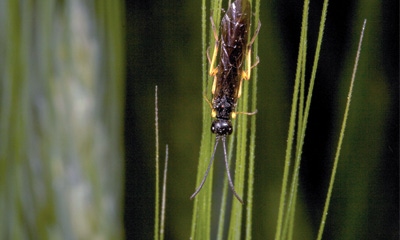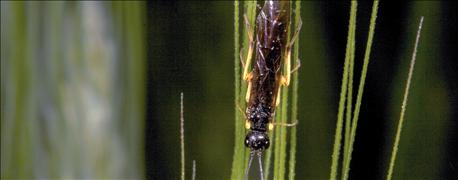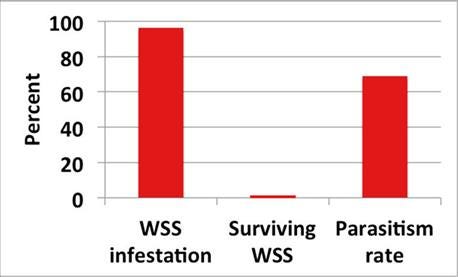October 17, 2016

The wheat stem sawfly used to be an exclusive pest of spring wheat; however, in recent years changes in its seasonality have allowed it to attack winter wheat as well.
It wasn't until the 1990s that this insect threatened wheat production in western Nebraska. Although it has been known to infest wheat fields primarily in Scotts Bluff, Banner and Kimball counties, the presence of wheat stem sawfly adults was easily observed throughout the Panhandle during the 2010 Wheat Disease Survey conducted by the Nebraska Extension.

LONG-TERM PEST: Wheat stem sawfly used to be a nuisance only in the spring; however, in recent years changes in its seasonality have allowed it to attack winter wheat as well.
This survey indicated that the wheat stem sawfly was more prevalent and presented a more serious risk to Nebraska than previously thought. This insect is firmly established in the winter wheat regions of the Nebraska Panhandle, Wyoming and Colorado, and recently was reported in northwest Kansas.
The adult sawfly (a wasp) lays its eggs into wheat tillers. However, the damage to wheat is caused by the activity of larvae, which feed inside the stem and notch the stem in preparation to overwinter. The notching of the stem greatly weakens it, making it prone to lodging and difficult to harvest.
The 2015 season brought a welcome surprise to some wheat fields in the Panhandle. Increased activity of a known sawfly parasitoid wasp, Bracon cephi, became obvious during early evaluation of the 2015 survey samples.

ON THE ATTACK: The Bracon cephi is one of the two parasitic wasps known to attack the wheat stem sawfly in North America.
There are at least two parasitic wasps, Bracon cephi and B. lissogaster, which attack the wheat stem sawfly in North America. Both of these parasitoids produce two generations per year. The adult parasitoids attack the wheat stem sawfly larva by first stinging it through the wheat tiller and paralyzing it. The parasitoid will then deposit one to four eggs near the sawfly larva.
Once the eggs hatch, the resulting parasitoid larvae will feed externally on the sawfly larva. The parasitoids feed on their host by creating small lacerations on the exterior of the sawfly larvae and then feeding on the juices, eventually killing the larvae. Once mature, the parasitoid larva will spin a cocoon that it will attach to the inside of the wheat stem.
Importantly, while the wheat stem sawfly overwinters within the wheat crown, its parasitoids generally overwinter much higher up within the wheat tiller. This is because the parasitoid kills the sawfly before it moves down the stem.
During this year's survey, some fields saw sawfly populations nearly eradicated by Bracon cephi (see bar graph). One field location with over 90% sawfly infestation had only about 2% surviving sawflies, with a 60%-plus parasitism rate.

This graph depicts the estimated percent infestation of wheat stem sawfly, surviving sawflies (living and overwintering), and sawfly parasitism rate from one wheat field in Banner County.
Certain cultural practices (such as stripper header harvesting with no or very minimal tillage) have been shown to improve survival of these parasitoids in Montana. Thus, certain harvest technologies counterbalance the benefit of reduced tillage to wheat stem sawflies.
Bradshaw is an associate professor of entomology and an Extension specialist with the Panhandle Research and Extension Center.
You May Also Like




